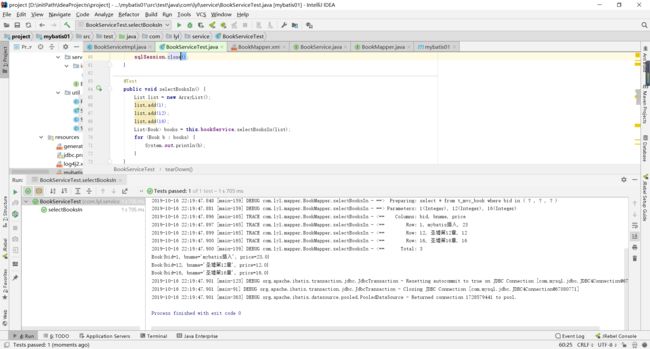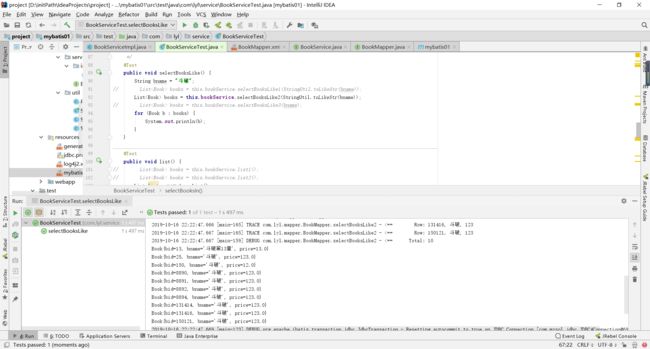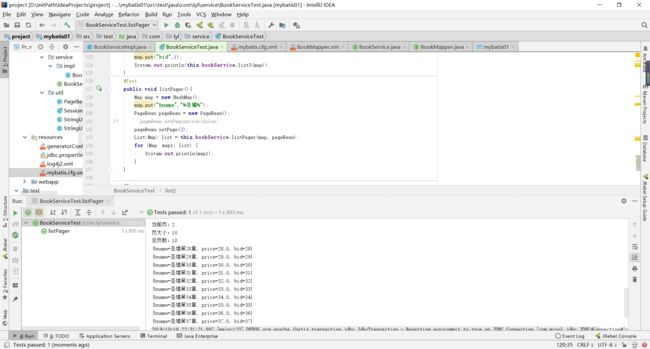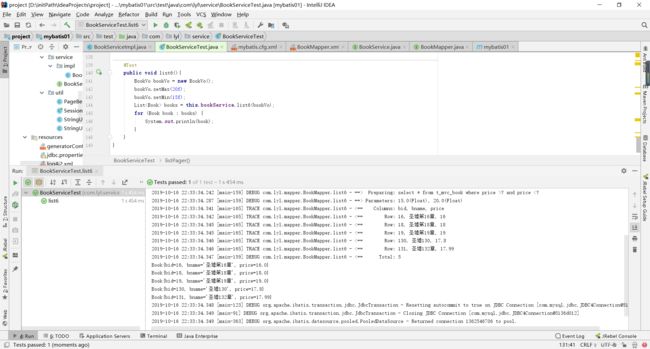mybatis的动态sql和分页
目标
1、mybatis动态sql
2、模糊查询
3、查询返回结果集的处理
4、分页查询
5、特殊字符处理
1、mybatis动态sql
If、trim、foreach
<!--foreach标签的使用-->
<select id="selectBooksIn" resultType="com.lyl.model.Book" parameterType="java.util.List">
select * from t_mvc_book where bid in
<foreach collection="bookIds" item="bid" open="(" close=")" separator=",">
#{bid}
</foreach>
</select>
List<Book> selectBooksIn(@Param("bookIds") List bookIds);
2、模糊查询
#{…}
${…}
Concat
注意:#{...}自带引号,${...}有sql注入的风险
<select id="selectBooksLike1" resultType="com.lyl.model.Book" parameterType="java.lang.String">
select * from t_mvc_book where bname like #{bname}
select>
<select id="selectBooksLike2" resultType="com.lyl.model.Book" parameterType="java.lang.String">
select * from t_mvc_book where bname like '${bname}'
select>
<select id="selectBooksLike3" resultType="com.lyl.model.Book" parameterType="java.lang.String">
select * from t_mvc_book where bname like concat(concat('%',#{bname}),'%')
select>
List<Book> selectBooksLike1(@Param("bname")String bname);
List<Book> selectBooksLike2(@Param("bname")String bname);
List<Book> selectBooksLike3(@Param("bname")String bname);
3、查询返回结果集的处理
resultMap:适合使用返回值是自定义实体类的情况
resultType:适合使用返回值的数据类型是非自定义的,即jdk的提供的类型
3.1 使用resultMap返回自定义类型集合
3.2 使用resultType返回List
3.3 使用resultType返回单个对象
3.4 使用resultType返回List <select id="list1" resultMap="BaseResultMap">
select * from t_mvc_book
select>
<select id="list2" resultType="com.lyl.model.Book">
select * from t_mvc_book
select>
<select id="list3" resultType="com.lyl.model.Book" parameterType="com.lyl.model.vo.BookVo">
select * from t_mvc_book where bid in
<foreach collection="bookIds" item="bid" open="(" close=")" separator=",">
#{bid}
foreach>
select>
<select id="list4" resultType="java.util.Map" parameterType="java.util.Map">
select * from t_mvc_book where bid in
<foreach collection="bookIds" item="bid" open="(" close=")" separator=",">
#{bid}
foreach>
select>
<select id="list5" resultType="java.util.Map">
select * from t_mvc_book where bid = #{bid}
select>
/**
* 使用resultMap返回自定义类型集合
* @return
*/
List<Book> list1();
/**
* 使用resultType返回List
* @return
*/
List<Book> list2();
/**
* 使用resultType返回单个对象
* @return
*/
Book list3(BookVo bookVo);
/**
* 使用resultType返回List
List<Map> list4();
/**
* 使用resultType返回Map,适用于多表查询返回单个结果集
* @return
*/
Map list5(Map book);
测试代码
@Test
public void list() {
// List books = this.bookService.list1();
// List books = this.bookService.list2();
List list = new ArrayList();
list.add(1);
list.add(12);
list.add(16);
/*
BookVo bookVo = new BookVo();
bookVo.setBookIds(list);
List books = this.bookService.list3(bookVo);
for (Book b : books) {
System.out.println(b);
}
*/
Map map = new HashMap();
/*map.put("bookIds",list);
List
map.put("bid",1);
System.out.println(this.bookService.list5(map));
}
4、分页查询
为什么要重写mybatis的分页?
Mybatis的分页功能很弱,它是基于内存的分页(查出所有记录再按偏移量offset和边界limit取结果),在大数据量的情况下这样的分页基本上是没有用的
使用分页插件步奏
1、导入pom依赖
2、Mybatis.cfg.xml配置拦截器
3、使用PageHelper进行分页
4、处理分页结果
Pom依赖
<dependency>
<groupId>com.github.pagehelpergroupId>
<artifactId>pagehelperartifactId>
<version>5.1.2version>
dependency>
Mybatis.cfg.xml配置拦截器
<plugins>
<!-- 配置分页插件PageHelper, 4.0.0以后的版本支持自动识别使用的数据库 -->
<plugin interceptor="com.github.pagehelper.PageInterceptor">
</plugin>
</plugins>
<select id="listPager" resultType="java.util.Map" parameterType="java.util.Map">
select * from t_mvc_book where bname like #{bname}
</select>
Mapper层
List<Map> listPager(Map map);
Service层
List<Map> listPager(Map map, PageBean pageBean);
@Override
public List<Map> listPager(Map map, PageBean pageBean) {
if (pageBean != null && pageBean.isPagination()){
PageHelper.startPage(pageBean.getPage(),pageBean.getRows());
}
List<Map> list = bookMapper.listPager(map);
if (pageBean != null && pageBean.isPagination()){
PageInfo pageInfo = new PageInfo(list);
System.out.println("总记录数:" + pageInfo.getTotal());
System.out.println("当前页:" + pageInfo.getPageNum());
System.out.println("页大小:" + pageInfo.getPageSize());
pageBean.setTotal(pageInfo.getTotal()+"");
System.out.println("总页数:" + pageBean.getMaxPage());
}
return list;
}
5、特殊字符处理
>(>)
<(<)
&(&)
空格( )
<![CDATA[ <= ]]>
相关代码配置
<select id="list6" resultType="com.lyl.model.Book" parameterType="com.lyl.model.vo.BookVo">
select * from t_mvc_book where <![CDATA[ price >#{min} and price <#{max} ]]>
</select>
<select id="list7" resultType="com.lyl.model.Book" parameterType="com.lyl.model.vo.BookVo">
select * from t_mvc_book where >#{min} and price <#{max}
</select>




